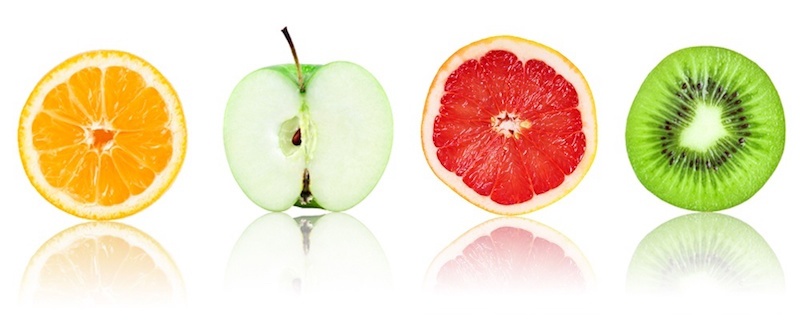
Following my previous blog post, Ten reasons to blemish grade, talking about external fruit grading, it seemed only natural to cover the importance of internal fruit grading next.
1. Create premium products
Consumers are willing to pay a premium for high quality produce, but they expect to have a consisten t and safe eating experience when they do.
t and safe eating experience when they do.
By sorting internal defects, you can create a premium product with extremely high consistency. Take Fruitday for instance; by investing in Compac technology, they were able to standardize fruit products for their consumers and create a premium product, Mr Orange. With internal defect sorting, it doesn’t matter when and where a customer buys their oranges, the taste and quality are always the same.
Read: Fruitday creates orange brand
2. Recover good produce and reduce wastage
Internal defect sorting allows you to pull the good produce out of a potentially bad lot and avoid any unnecessary wastage.
Instead of dumping blocks of produce which may or may not meet standards, you can check each individual piece of fruit to make sure it meets the grade. Investment in internal defect sorting gives you the ability to pack every piece of good fruit, regardless of the batch’s overall quality.
3. Better management of inventory (maturity)
Eco Farms was able to benefit hugely from internal defect sorting o f their avocados in two ways. First, by packing each box with consistent maturity (based on dry matter), they are able to ensure that when the box reaches the customer, all avocados remain the same color rather than the often-seen checkerboard appearance. Secondly, when repacking, they perform a quality check by looking at internal color and pressure to ensure that all avocados are suitable for repack.
f their avocados in two ways. First, by packing each box with consistent maturity (based on dry matter), they are able to ensure that when the box reaches the customer, all avocados remain the same color rather than the often-seen checkerboard appearance. Secondly, when repacking, they perform a quality check by looking at internal color and pressure to ensure that all avocados are suitable for repack.
You can find out more by watching the Eco Farms video here
4. Meet increasing demand for technology
Innovation within the packhouse continues to bring new technology to meet the demands of customers. With the evolution of grading in the packhouse, produce was first differentiated by size, then color and then external quality. We are now seeing the next step to differentiation by internal quality. While adoption rates depend on the variety being sorted, the whole industry recognizes that this is a step change in capability.
5. Better data and integration
The other major trend at the moment is in data and integration – this has been heralded as the fourth industrial revolution.
Internal grading provides a unique, and particularly valuable dataset acquired from each individual piece of produce, without impacting the production environment. This data can then be fed back to the orchard and growing methods can be adjusted to reach optimal yield and taste.
6. Automated, real-time quality control
Internal grading allows for real-time quality control of the produce as it runs across the line. It is non-invasive and the technology allows you to set criteria for what is and isn’t acceptable to ensure the quality meets your customers’ expectations.
7. Improve returns to growers by maximizing pack-out on spec
Whether you use internal grading for premium product creation, inventory management, or disaster recovery, the end result is a higher dollar packout. This means more of the growers’ fruit is going into the best possible box and if you’re competing for growers, they’ll get a better return from your packhouse. You can read a great example of how Hume was able to recover 120,000 trays of kiwifruit in the 2016 season that were set to be dumped.
8. Protect and enhance your consumer brand
For those that own retail brands, you know that one bad eating experience can turn away a consumer indefinitely. Only a consistently enjoyable experience will result in loyal customers, so the ability to minimizing the risk of bad fruit making a pack can be a game-changer for your brand.
Typically, consumers make their first purchase based on external quality, but they make repeat purchases based on internal quality.
9. Competitive advantage
Whether you’re competing to attract growers or competing for consumers in the marketplace, it’s always important to stay one step ahead of the rest. Internal grading can be a real differentiator when the competition gets tough.
Showing commitment to your growers through investment in technology gives your packhouse an advantage.
10. Improve your bottom line
Internal grading is typically used in one of three ways: Extracting more value from your crop, improving the effectiveness of inventory management, and/or insuring against negative events. The results of this work is to increase three main metrics: packed value for your growers, operational efficiency in your packhouse, and brand value for your consumers. All of this adds up to higher gross margins for the company, and ultimately better returns to shareholders.
Inspection and grading is central to Compac's packhouse solution and incorporates our industry-leading Spectrim and Inspectra systems. These innovative systems allow packhouses to reduce labor required for sorting, whilst significantly improving the consistency and accuracy of the sorted product. Click here to contact us for more information about our products.



